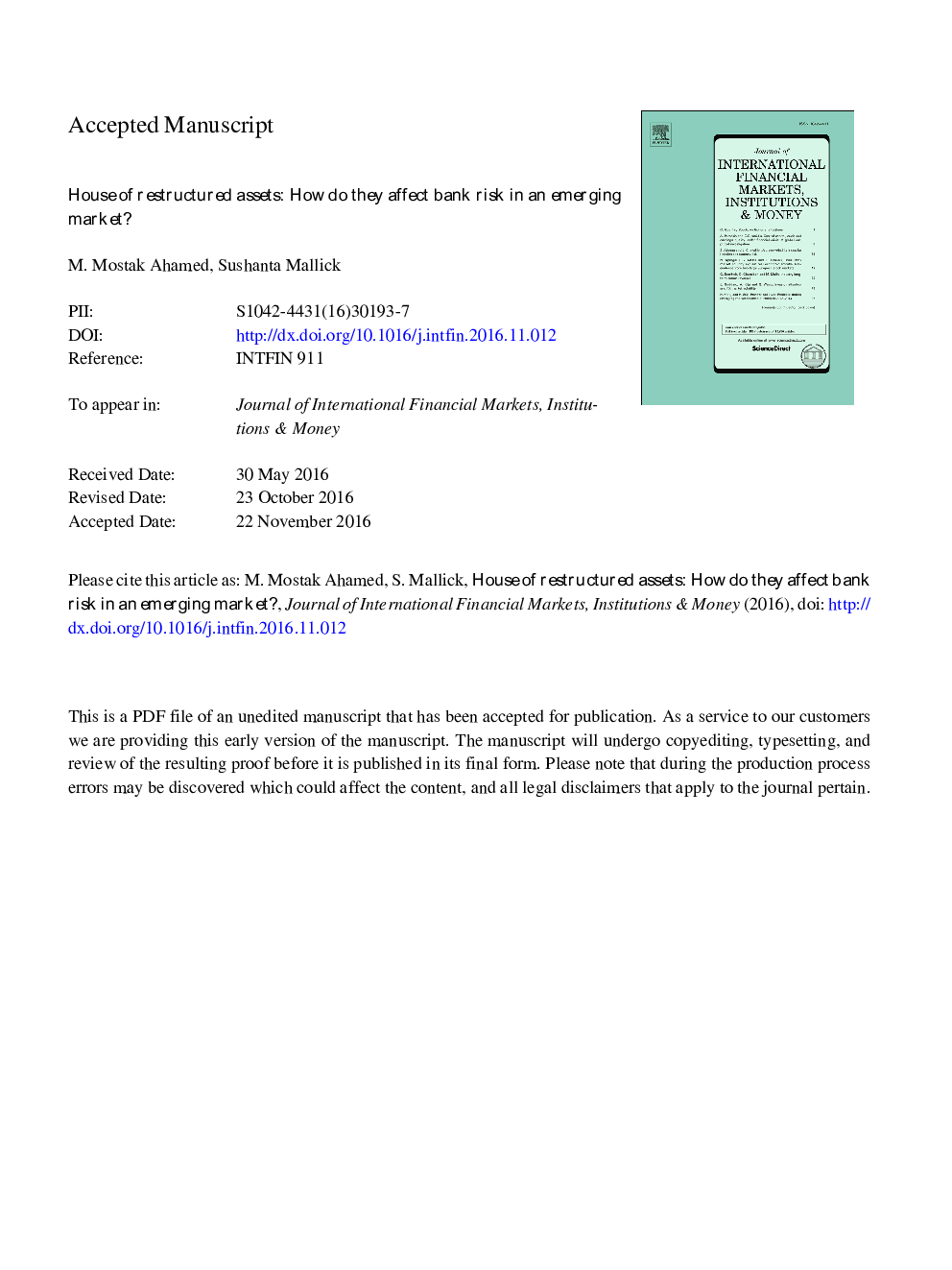| کد مقاله | کد نشریه | سال انتشار | مقاله انگلیسی | نسخه تمام متن |
|---|---|---|---|---|
| 5101041 | 1479100 | 2017 | 35 صفحه PDF | دانلود رایگان |
عنوان انگلیسی مقاله ISI
House of restructured assets: How do they affect bank risk in an emerging market?
ترجمه فارسی عنوان
خانه دارایی های بازسازی شده: چگونه آنها در بازار نوظهور تاثیر می گذارد؟
دانلود مقاله + سفارش ترجمه
دانلود مقاله ISI انگلیسی
رایگان برای ایرانیان
کلمات کلیدی
موضوعات مرتبط
علوم انسانی و اجتماعی
اقتصاد، اقتصادسنجی و امور مالی
اقتصاد و اقتصادسنجی
چکیده انگلیسی
Emerging market banks continue to grapple with growing non-performing assets (NPAs), making regulatory intervention inevitable to avoid bank failure following corporate default. In the context of India, bankruptcy reforms were enacted for the first time in 2016 in the form of a unified Insolvency and Bankruptcy Code. In this paper, we investigate the impact of a regulatory intervention by the Indian central bank over the last decade in leading an attempt to prevent bank failure in the absence of a sound bankruptcy process. We assess how the volume of restructured assets at bank level impacted risk taking of Indian banks over the time period 2003-2012. During this period, a large number of banks restructured their distressed assets as a means to reduce NPAs. Our results show that higher levels of restructured assets significantly reduced risk taking as banks benefited from low provisioning, and this relation is more pronounced for banks that had lower loan loss provisions. We also find that by restructuring distressed assets, public sector banks benefited significantly more in improving their stability than private sector domestic and foreign banks. Overall, our main results suggest that similar regulatory support in the absence of a strong legal-system, can be implemented to avoid bank fragility in other emerging market economies.
ناشر
Database: Elsevier - ScienceDirect (ساینس دایرکت)
Journal: Journal of International Financial Markets, Institutions and Money - Volume 47, March 2017, Pages 1-14
Journal: Journal of International Financial Markets, Institutions and Money - Volume 47, March 2017, Pages 1-14
نویسندگان
M. Mostak Ahamed, Sushanta K. Mallick,
